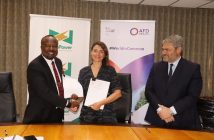Open-Ed
There has been a lot of talk about mobilising and unlocking Global North financial commitments to help developing countries meet their decarbonisation commitments. In South Africa this conversation is complemented by how to crowd in private sector finance given the country’s limited fiscal space. While the discourse is understandably currently focused on these issues of mobilisation and unlocking (for example the IPG’s $8.5b JETP offer), there has been precious little conversation about how such funding (if and when it becomes available) will actually be deployed in the real economy. To deploy finance from either the Global North or the local financial sector will require the allocation of capital to specific investments. When over 50 South African financiers were asked if they had a working understanding of what would constitute a just transition transaction 100% responded that they did not.
The Impact Investing Institute of the UK recently published its framework for a just transition investment vehicle. The framework built on the G7 blueprint for a just transition which comprised three elements: environmental and climate action, community voice, and, socio economic improvement. The III framework applies three criteria to the G7 elements. First a qualifying investment vehicle must commit to all three elements. Second the vehicle must do no harm. Finally investments must deliver outcomes and impacts in two of the three elements.
The III contribution is an important global first. It tries to answer the question: what does good (or good enough) look like in the context of a just transition vehicle or investment. However, because the aim of the framework is to maximize the volume of finance mobilised, it sets the qualifying criteria bar quite low. For example in the existing framework an investment can be counted as a just transaction investment if it delivers a net positive environmental and socio economic improvement impact, even if it excludes any community or labour participation.
Some local commentators have suggested that the III framework be adopted in South Africa. The strongest argument for this view is that it will facilitate inbound investment. Other commentators feel that given South Africa’s historic legacy and current baseline of poverty, unemployment and inequality the III qualifying bar is too low in the domestic context. This view which takes into account the need for meaningful buy in from a range of stakeholders, recognises that while a significant volume of just transition funding will be required, the quality of just transition finance will be as important ( if not more important) than the quantum.
Research is underway to develop a framework to evaluate what could qualify as a just transition transaction in a South African context. The framework includes pre-screening criteria; eligibility criteria organised around dual qualifying objectives and activities; and the idea that ‘just’ is not an absolute term but covers a spectrum of ambition. The framework allows for just transition transactions and more ambitious just transition plus transactions. The level of ambition is differentiated by a transaction’s commitment to meaningful empowerment of previously disadvantaged communities or groups through a specific menu of possible actions. More ambitious transactions should be incentivised by superior financing terms and conditions and preferential access to concessionary finance and credit enhancements.
Research is also being undertaken on just transition indicators, measurement and reporting. The challenge here is the dilemma of needing to have indicators which are material to a specific investment and context specific – while simultaneously being standardised and comparable as required by the finance community.
There are three key takeaways from the current local research. First considerable and focused attention needs to be paid to the pragmatic issues which need to be in place before just transition funding can actually begin to flow. Second providing clarity on a just transition transaction definition and measurement will take time. It will be an iterative process which must be based on learning by doing and experimentation. Finally, in the short run delivering proof of concept investments is seen as critical to unlocking on the ground financial flows.
Author: Sandy Lowitt
Sandy is A Research Fellow at Trade and Industrial Policy Strategies (TIPS). She holds a Master of Commerce from Wits University in Economics. She helped establish the Economics Department in the Gauteng Provincial Government in 1995 and remained at GPG until 2006. While specialising in economic research and industrial policy and strategy she also worked at Blue IQ which delivered large infrastructure projects such as the Gautrain, the Innovation Hub and the Automotive Supplier Park. Sandy is active in public policy research and strategy development and has worked for the Presidency, the dtic, DST and National Treasury. Sandy has currently become active in just transition finance research.
Disclaimer: The articles and videos expressed in this publication are those of the authors. They do not purport to reflect the opinions or views of Green Building Africa, our staff or our advertisers. The designations employed in this publication and the presentation of material therein do not imply the expression of any opinion whatsoever on the part Green Building Africa concerning the legal status of any country, area or territory or of its authorities.













